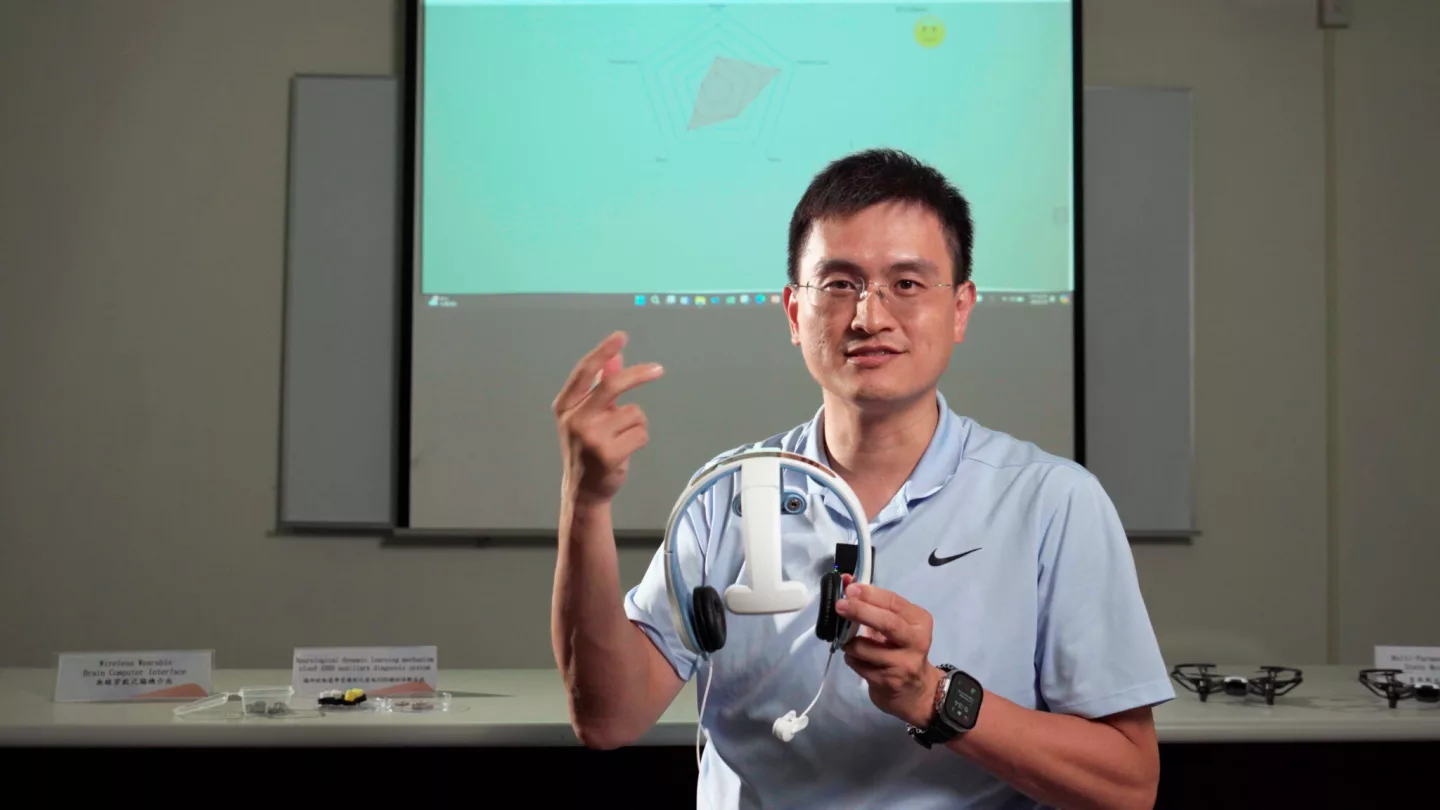A wearable, non-invasive brain-computer interface (BCI) that quickly measures neural activity while the user plays through a video-game 'test' is helping clinicians more accurately diagnose attention-deficit/hyperactivity disorder (ADHD). While still in the research stage, this novel invention is showing a lot of promise in removing the gray area of ADHD diagnosis.
Right now, until we know more about ADHD genetic biomarkers, diagnostic measures are largely down to psychiatric and behavioral evaluation. As the Mayo Clinic outlines, there are three recognized types of ADHD assessed by symptoms: Predominantly hyperactive/impulsive, predominantly inattentive, and combined or mixed – where someone lands on the broad and varied spectrum between these two.
The traditional system of diagnosis has particularly failed those with combined type ADHD, where symptoms are less overt than the disruptive, hyperactive and easily distracted behaviors most often associated with the condition in children. People with more 'internal hyperactivity' and internalized symptoms have learnt to mask to fit into a society that is challenging for neurodivergent brains, and because they're also often academically gifted or high-achieving, they have essentially been hidden in plain sight. We're only starting to understand the complex relationship between inattentive and combined type ADHD and anxiety; girls, in particular, have often been diagnosed with generalized anxiety disorder (GAD), when ADHD has been the underlying issue.
Now, researchers from Taiwan's National Yang Ming Chiao Tung University (NYCU) hope to simplify and remove some of the barriers to accurate ADHD diagnoses. They've developed a wireless BCI device that fits comfortably on a patient's head to record both resting-state and 'task-state' electroencephalography (EEG) signals.
While currently EEG can be used to assess brain activity for ADHD diagnoses, it doesn't take into account this resting/task state, nor does it identify the nuances of the subtypes of the condition – which, not surprisingly, is complex and widely varied when it comes to combined type ADHD.
"It's convenient and time-saving – it only takes 10 minutes to put on this device," explained researcher Jo-Wei Lin at Taiwan's Innotech Expo on October 18. "For children, traditional ADHD diagnosis needs many interviews with teachers and parents, and questionnaires to decide whether the child has ADHD or not.
The BCI works in conjunction with a game or video designed to stimulate a visual and auditory response in the patient, and information from the brain is transmitted from each dry EEG electrode in different channels to specially designed AI-assisted software.
"We use this to detect the EEG and transport the data to the platform that the doctor can see, [showing] attention, stress and fatigue indicators in real time," said Lin. "We then send the EEG signals to to the AI-assisted system, to decide whether [the patient] has ADHD or not."
While not designed to replace clinicians, the device is more an additional tool to accurately identify and then treat ADHD. While the research has been focused on children, the team says that the way the brainwave processing works, it's adaptable for adults.
"We would send this report to the doctors to help them – to give them more objective indicators to help them decide on the ADHD," Lin added.
The game-based test is a novel addition to ADHD assessment, and one that feels more user-friendly for kids than interviews and questionnaires. And, working with Hsinchu Ton Yen General Hospital and Kaohsiung Chang Gung Memorial Hospital, the team's device has achieved an accuracy rate of around 95%.

“We let the children wear the testing device to play the ‘game-based attention test’ by the research team," said team lead Li-Wei Ko, professor of the Institute of Electrical and Control Engineering at NYCU, in September. "At the same time, we analyze their brainwave changes to determine whether they tend to hyperactivity, which can shorten the traditional diagnostic process that takes three months to one month."
In this video, the team explains the device, which has the potential to be broadly applied for neuroscience diagnostics and treatment.
Early research into the technology was published in the Journal of Neural Engineering. You can read more about the resulting invention in the researchers' June 2024 US patent application here.
Source: National Yang Ming Chiao Tung University via Taiwan Innotech Expo






